 Family Stories
Family Stories
» Show All «Prev «1 ... 7 8 9 10 11 12 13 14 15 ... 44» Next» » Slide Show
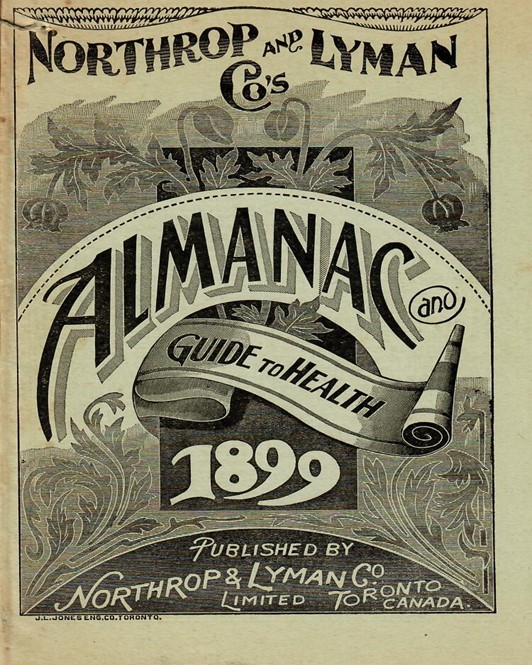
The
origins of this prolific company date to 1854 when Tuttle and Moses started a
retail pharmacy in Newcastle, Canada West.
They were a branch of the same firm based in Auburn, New York. Soon after Henry Northrop, a traveler (sales
representative) with the firm, joined to form Tuttle, Moses and Northrop. By 1857, they had become Northrop and
Moses. Sometime between 1859 and 1862,
another company traveler by the name of John Lyman joined, and they bought out
Tuttle and Moses to form Northrop and Lyman.
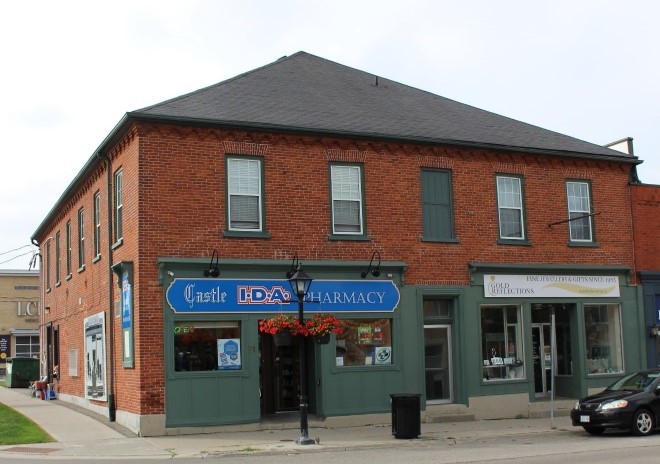
Neither founder was a trained
pharmacist so to legally dispense they hired a druggist by the name of William
Adolphus Rose. Their store, which is
still a pharmacy today, is located at 71 King Avenue-West in Newcastle,
Ontario. For many years there was a wooden warehouse connected to the back of
the building where women compounded their pills.

Henry and his wife, Mary lived at 261
Mill Street, South, opposite St. George’s Anglican Church. Their daughter Cora Maude was baptized at
St. George’s. It was designed by
Scottish architect, Williams Hays and is an example of classic Gothic church
architecture that also resembles an English country parish. Sadly, the Church was decommissioned in 2022
but the Northrop house is still a private residence.
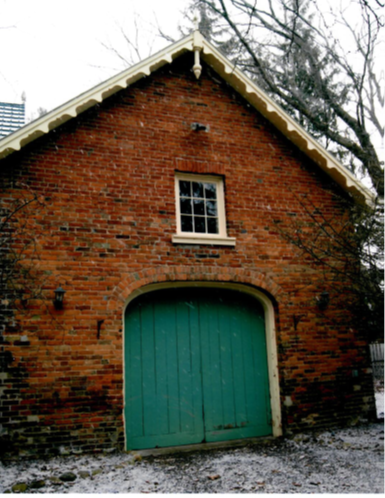
Due
to the risk of fire, their insurance company would not permit liquid remedies
to be manufactured at the store. Instead, they used a brick building behind their
house to make their Canadian Pain Destroyer, Eclectric Oil and other
remedies. It is now a garage.
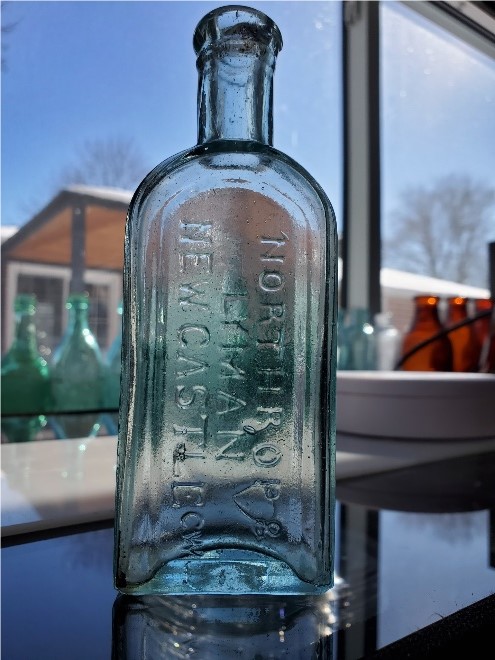
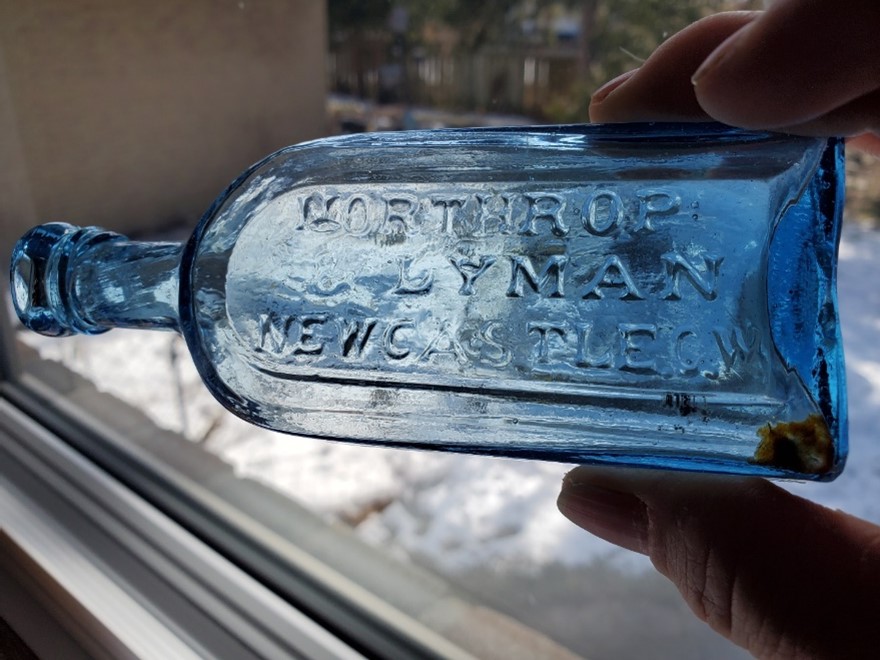
A very desirable sapphire blue variant of the Newcastle bottle. An apple green example also exists.
Given the age of these bottles and the origin of the owners, it is likely they were made in the United States, possibly in a glass house in New York State. In Canada West, the first major producer of bottles was the Hamilton Glass Works in 1864 followed by the Burlington Glass Works in 1874.
A transition bottle exists marked Darley’s Arabian Oil on the front panel and Northrop and Lyman on one side and Newcastle, Ontario on the other. It was made sometime after Confederation (July 1, 1867) and before they moved to Toronto. It is likely that this was one of their products. Catherine Sullivan in her article ‘Bottles of Northrop and Lyman, A Canadian Drug Firm’ suggests that that their pharmacist, William Adolphus Rose, was known for making veterinary preparations. He also had a local reputation for giving farmers advice on their livestock.
Further support for this idea can be found in Glen Phillips book, ‘The Ontario Drug Store and Druggist list (1851-1930)’. Rose is listed as operating in Newcastle CW between 1857 and 1867 as a chemist and druggist, stationer, and veterinary surgeon. He shows up again in Tamworth, Ontario in 1870 operating a drug and grocery store along with his brother Daniel. Northrop and Lyman continued to sell this and other veterinary products under the Darley name well after the move to Toronto.
With Northrop and Lyman’s eventual move to Toronto and increased local glass production, the company were able to ‘buy Canadian’. The Toronto Glass Company was an offshoot of Hamilton Glass. According to Gerald Stevens authoritative book, ‘Early Canadian Glass’, they started in 1894 and were Toronto’s first industrial manufacturing operation. They made everything from pickle jars, to whiskey flasks to patent medicines including the very popular Dr. Thomas’ Eclectric Oil.
The Toronto Glass Company factory was designed by architect Col. Arthur Denison. It was a red brick, two-story factory located at 99 Sudbury Street. Now boarded up, it is located just west of Dovercourt, in the West Queen Triangle. Sadly, it is the last factory building in the area. It was slated to become a condo tower like so many other older industrial buildings however it appears that Metrolinx has purchased the rights to convert the property into a SmartTRack Rapid Transit Station.
While they were in Newcastle, they became agents for other patent medicine manufactures like John Cook Ayers of Lowell, Massachusetts (Cherry Pectoral, Sarsaparilla, etc.) as well as “The Great Shoshonees Remedy of Dr. Josephus” manufactured by Young and Chamberlain of Conway, Canada West. This was a common practice as it saved setting up an office and hiring staff often at great distances.
They posted advertisements for both of these products in the January 30, 1868 edition of Bowmansville’s Canadian Statesman. In the July 12, 1871 edition of Kingston’s, The Daily British Whig, they advertised Darley’s Arabian Oil and Ayers Hair Vigor.
By the end of their time in Newcastle, they had transitioned from a retail pharmacy that sold some patent medicines (as most did at that time) to patent medicines alone. In order to access better shipping facilities for their growing inventory, Henry and John moved the business to Toronto in 1874.

|
The 1875 City Directory
lists Henry living at 130 Carlton Street.
It was at the intersection of Carlton and Jarvis and is now a
condominium. John’s residence was at 388 (now 404)
Sherbourne Street (house on right).
He lived there for three years before moving to a larger home on
Sherbourne. |
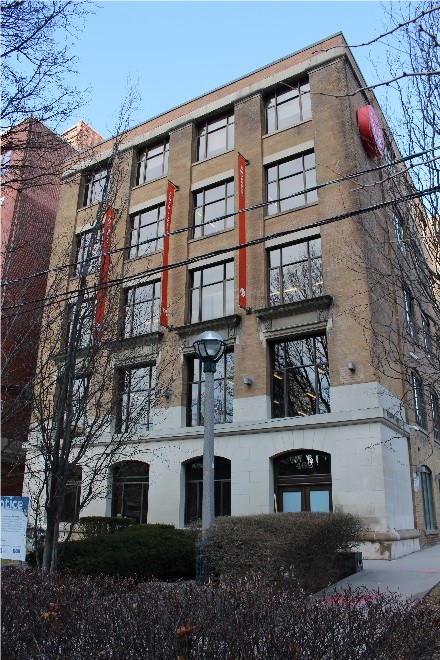
After a 1904 fire that struck this area known for wholesale and light manufacturing, they moved their ‘laboratory’ to temporary quarters at 86-88 Richmond Street, West. In 1917, they moved into their own building at 462 Wellington, Street-West.
Thanks to the preservation efforts of the City of Toronto the building still stands. Their last known address was in the 1980’s when they were located on Ellesmere Road under the name of Northrop-McGillivray.
By
the late 1870’s they had become one of the largest dealers of patent medicines
in the country. A large part of their success was due to acquiring the formula
to sell Dr. Thomas’ Eclectric Oil from its inventor, Dr. S.N. Thomas of Phelps,
New York. He had started selling it in
the 1840’s. It was already a popular
remedy when Northrop and Lyman began producing it in Canada in 1871.
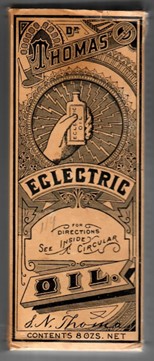
It is not surprising that it was so popular given that it claimed to be good for internal and external ailments and for both man and beast. It had an international market and over the years, the company literally sold millions of bottles. In spite of the passing of the Canadian Proprietary or Patent Medicine Act in 1908, it continued to be sold into the 1960’s!
In 1880 or 1884, Foster-Milburn and Co purchased the factory and the rights to Dr. Thomas’ in the United States. The Milburn in this partnership was none other than Canadian, Thomas Milburn manufacturer of Burdock Blood Bitters. The T. Milburn building still exists on Colborne Street in Toronto.
The number of different products Northrop and Lyman sold over the years is still unknown. An advertisement in the Canadian Pharmaceutical Journal (July 1884) lists 130 products. This included their own patent medicines as well as popular brands belonging to others. In addition, there were household preparations, toiletries and veterinary medicines.
Some of their pre-Patent and Proprietary Medicine Act products included Canadian Pain Destroyer, Eclectric Oil, Graves Worm Exterminator and their Vegetable Discovery and Dyspeptic Cure. Mother Grave’s and Eclectic Oil continued to be sold after the act was passed. New products were introduced after 1908 such as Douglas’ Egyptian Liniment, Skeeter Skatter (for mosquitos) and Miller’s Baby Cough Syrup. Today, we would call them over the counter medications.
Northrop and Lyman and Company operated for over 120 years, from 1854 to the 1980’s. It began as a retail drug store in Newcastle, Canada West and soon moved to Toronto where it became the largest wholesaler of patent medicines in the country. It eventually grew into a large pharmaceutical firm with a national and international customer base. While there are questions about the medicinal value of many patent medicines, they do represent a phase in our medical history. At their peak, Northrop and Lyman could compete with any American patent medicine company and are a true Canadian success story.
The Partners
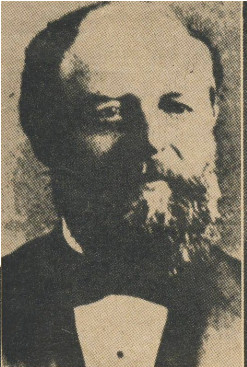
Henry Stephen Northrop

Henry Stephen Northrop was President of the company. He was born in New York State on December 7, 1820 and died in Toronto on November 21, 1893.
Henry is interred in the family mausoleum in Toronto’s Mt. Pleasant Cemetery along with his wife Mary Prout Strong and her sister Celia Mary Strong. Their daughter Cora Maude and her spouse, George Horace Gooderham along with their daughter Mary Gooderham Hogarth are also there.

George was the grandson of William Gooderham, co-founder of the Gooderham and Worts distilling empire. Toronto’s popular Distillery District dates to the 1860’s when ‘G&W’ was a major exporter of whiskey. George and Cora lived in the stately home at 504 Jarvis Street between 1891 and 1906.
Henry’s Walking Stick
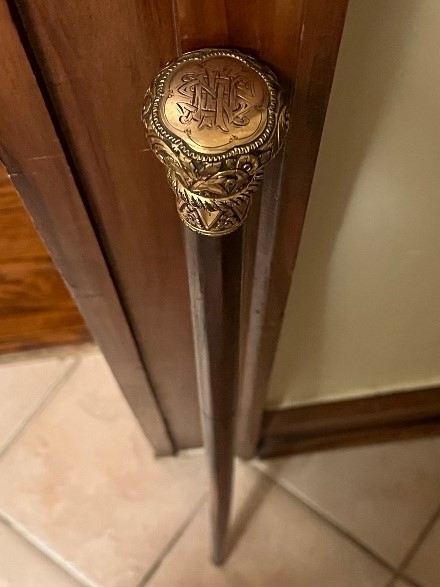
In
the 19th century, canes or walking sticks were part of a gentleman’s
wardrobe as swords had been previously.
They were a status symbol and could be used for self-defense.

John Lyman was born in Massachusetts on April 2, 1821 and died in Syracuse, New York in 1904. John was Vice President of the company but assumed the Presidency with Henry’s passing. John’s second wife was Viola Curtis. They had two daughters, Mary and Jesse who sadly, died young. The couple donated $200,000 to Syracuse University in their memory. John had been on the Board and the result of their gift was the construction of the Lyman Hall of Natural History, which is still part of the campus today.
The Story Behind the Story
A point form version of this article is part of a display on Northrop and Lyman put on by members of the Four Seasons Bottle Collectors Club: Alyson Hazlett, Scott Jordon, George Miller, Glen Moorhouse and Sean Murphy for their annual show and sale. Also included are examples of their bottles, wooden containers, posters and other advertising pieces. This year’s event is on April 23, 2023 at the Chestnut Hill Developments Recreational Complex in Pickering, Ontario. It is the 27th anniversary of the show and the 40th for the club. The displays are a way for members to share their often museum quality collections with the broader public. This year’s Display Chair is Graham Huntley.
In terms of the story, I would like to thank my fellow collectors, both those in the club and beyond for sharing their Northrop and Lyman artifacts. Whether they are bottles, signs, invoices or almanacs they add to our knowledge of this and other companies and the people that operated them.
I am also indebted to others who have written about this fascinating company. People like Myno Van Dyke, President of the Newcastle Historical Society and author of ‘Northrop and Lyman – The Medicine Men’ and Catherine Sullivan’s, ‘The Bottles of Northrop and Lyman, A Canadian Drug Firm’ and ‘Dr. Thomas’ Eclectric Oil’. Glen Phillips book, ‘The Ontario Drug Store and Druggist List (1851-1930)’ is also a valuable resource for anyone doing research on pharmacy in the province.
Thanks also to the Gooderham family for sharing information and the picture of Henry’s walking stick. Together we have moved the dial on our understanding of Canada’s largest patent medicine company.
This longer article is part of book under development on Toronto’s role in the great patent medicine era and the rise of legitimate pharmacy and may not be reproduced without the permission of the author.
Glen Moorhouse pugsanna@sympatico.ca
1857 Canada’s Largest Patent Medicine Company - The Northrop and Lyman Story
George Horace Gooderham’s father-in law, Henry Stephen Northrop and his partner, John Lyman, built what was at one time, Canada' biggest patent Medicine company.
| Linked to | Cora Maude Northrop; Henry Stephen Northrop |
» Show All «Prev «1 ... 7 8 9 10 11 12 13 14 15 ... 44» Next» » Slide Show
